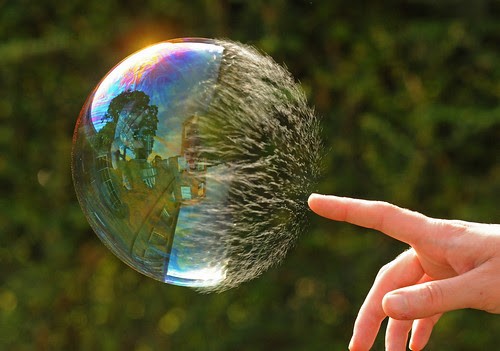Blog Post

Escaping the Bubbles: Understanding Filter Bubbles and Echo Chambers
In the digital age, where information is at our fingertips, we are increasingly becoming cocooned in a world of personalized content. Social media platforms, search engines, and news websites are tailored to deliver content that aligns with our interests and beliefs, leading to the formation of filter bubbles and echo chambers. While they may sound similar, these two phenomena have distinct characteristics and significant impacts on our social influence and the way we perceive the world.
Filter Bubbles
Filter bubbles are virtual cocoons of information that form around individuals, shielding them from diverse perspectives and alternative viewpoints. This phenomenon occurs when algorithms selectively curate content based on an individual's past behavior, preferences, and interactions. As a result, users are exposed to content that reinforces their existing beliefs and interests, creating an echo chamber effect.
The consequence of filter bubbles is that users may become unaware of the broader spectrum of opinions, leading to a distorted worldview and the reinforcement of biases. For instance, in the realm of politics, a person with liberal inclinations may find themselves surrounded by content that portrays conservatives in a negative light, making it difficult for them to empathize with or understand conservative perspectives.
Echo Chambers
Echo chambers, on the other hand, are the social structures that form when like-minded individuals engage in discussions, reinforcing and amplifying each other's viewpoints. Unlike filter bubbles, which are more personalized to individual preferences, echo chambers result from social interactions with others who share similar beliefs. People gravitate towards like-minded communities, online and offline, where their opinions are validated and seldom challenged.
The danger of echo chambers lies in their potential to create an illusion of consensus. When we only hear ideas that confirm our existing beliefs, we may perceive them as the majority opinion, and any dissenting views may be dismissed as outliers or ignored altogether. This can lead to polarized societies, hinder meaningful dialogues, and breed intolerance towards differing perspectives.
Impact on Social Influence
Both filter bubbles and echo chambers have significant effects on how we perceive information and make decisions. They can reinforce confirmation bias, making us more resistant to new ideas and evidence that contradicts our existing beliefs. As a result, critical thinking and open-mindedness may suffer.
From a societal standpoint, these phenomena contribute to the fragmentation of communities and can exacerbate divisions. In a time where disinformation and fake news are prevalent, filter bubbles and echo chambers can further contribute to the spread of misinformation, as individuals may not be exposed to fact-checking or alternative sources.
Escaping the Bubbles
To break free from filter bubbles and echo chambers, individuals must actively seek out diverse viewpoints, engage in respectful dialogues with those who hold different opinions, and consume information from reputable sources. Additionally, being aware of the algorithms and systems that curate our content can help us take control of the information we receive.
In conclusion, understanding the differences between filter bubbles and echo chambers is crucial for acknowledging their impact on our social influence and worldview. By consciously broadening our horizons and fostering open conversations with people from diverse backgrounds, we can burst these bubbles and create a more inclusive, informed, and united society.
Copyright © 2023 Harvard Business Council

